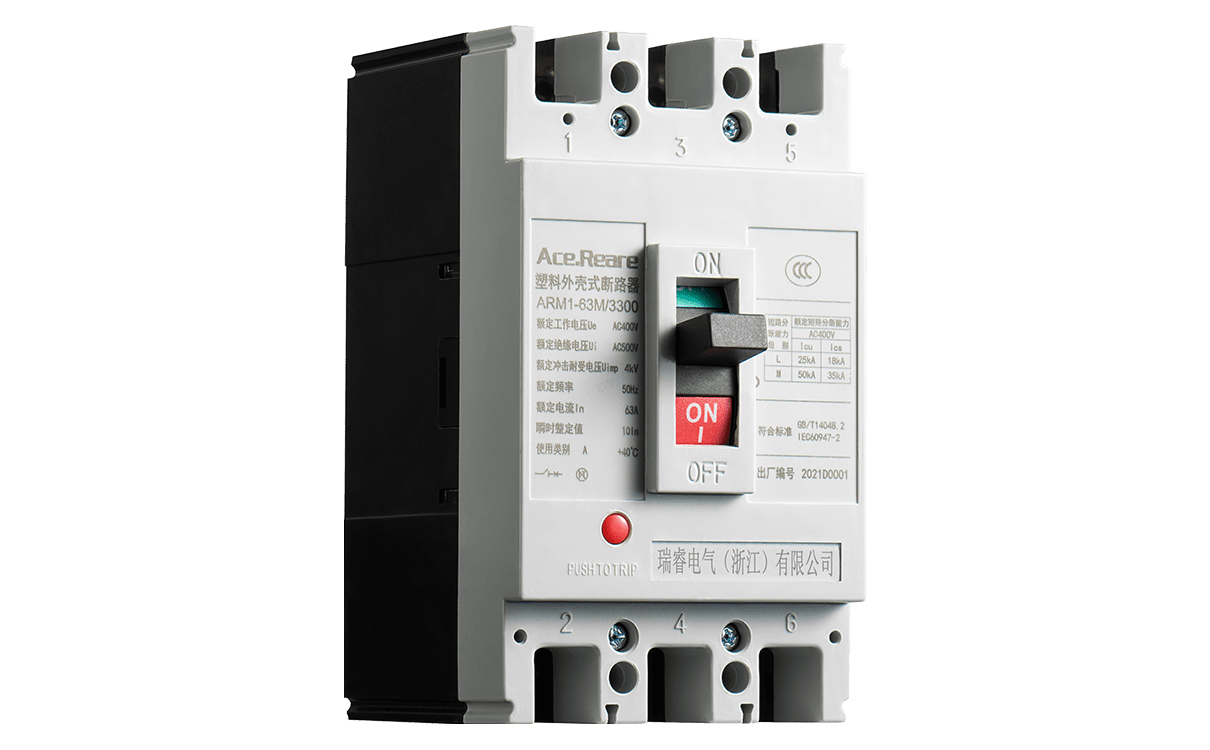
Date | 2022-09-14 13:20:09
The models of electronic circuit breaker manufacturers' products include the number of stages. It is common to find various types of stages, what do the different stages represent? Let me give you a brief introduction.
From a professional point of view, the "pole" of a circuit breaker refers to the pole used to break the wire, but does not necessarily provide protection for the pole. Simply put, it is the number of lines that are cut off at the same time. For example, 3P and 4P can be used to cut off 3 or 4 circuits at the same time. Example: 3P electronic circuit breakers are generally installed more often in distribution cabinets and are mostly used to control the three phase lines on the power supply of three-phase AC circuits. 4P can also control three-phase AC circuits through the three-phase power supply, the other control pole is often used as a switch normally open auxiliary contacts. This means that other controllers, such as PLCs, can transmit this contact as a signal for breaking and closing when they need to collect the switching of this circuit breaker. These vary according to actual requirements.
The manufacturer of electronic circuit breakers describes the meaning of p and n in the number of stages, which can be discussed in two ways:

I. Classification from products
1P, 2P, 1P+N, 3P, 4P, 4P+N, p is the pole with protection installed (cathode) and n is the neutral line with only the cathode installed and no protection module. 2P and 1P+N are both two-pole switches, while 4P and 3P+N are both referred to as four-pole switches. The 1P+N and 3P+N have no protection installed on the neutral line and are therefore very cheap. The cutter pole of the neutral line is moved together with the cutter pole of the phase line. Depending on the product, there are also two types of 1P+N. One uses two module widths, the other electronic circuit breakers use only one module width.
1P single-pole switch, 2P two-pole switch, 3P three-pole switch, 4P four-pole switch, single-pole switch with 1P+N-zero terminal (zero line is not cut off), three-pole switch with 3P+N-zero terminal) ) zero line is not cut off).
Second, from the electrical technology side
The choice of single-pole and two-pole switches, three-pole switches and four-pole switches actually depends on whether the line neutral needs to be disconnected. 1 . Considering the safety of maintenance, the TT system needs to disconnect the neutral line when overhauling and requires two-pole and four-pole switches. After the TN system has been electrically connected, there is no need to disconnect the neutral line, except in special cases (see measures); generally menu poles and three poles are sufficient. Do not use four-pole switches and try not to use them. Because of the risk of "fragmentation". 2 . Check if there is a need to isolate the two earthing systems when there are two power supplies. In addition, 1P+N, 3P+N and 2P, 4P are treated electrically as two-pole and four-pole switches, which require disconnection of the neutral, but where it is judged that the neutral current must not exceed the phase line, from the point of view of cost reduction, it is necessary to choose 1P+N, 3P+N
The 1p (1-pole) switch has only one terminal and can only disconnect one phase line. This switch is suitable for controlling the "fire" wire of one phase.
The 2p (3-pole) switch has two terminals, one for the phase line and one for the zero line. This switch is suitable for controlling one phase and one zero.
The 3p (3-pole) switch has three terminals, all three of which are connected to the "fire" wire. This switch is suitable for the control of three-phase 380V lines.
The 4p (4-pole) switch has four terminals, three of which are connected to the "fire" line and one to the zero line. This switch is suitable for the control of three-phase, four-wire control lines.
Finally, there is the problem. In the above discussion of the number of stages, we found electronic circuit breakers with the same number of stages, but it is also possible to have 4P and 3P+N both with four stages. What is the difference? Also, how should one choose?
According to the above discussion, both are four-stage switches, the difference being that the n-wire of the 4P is protected and the n-wire of the 3P+N is not. Also, the n-line of the 3P+N does not have an overload or short-circuit release coil, so the protection does not work. There is a mechanical relationship between the n-pole line and the other 3 stages.